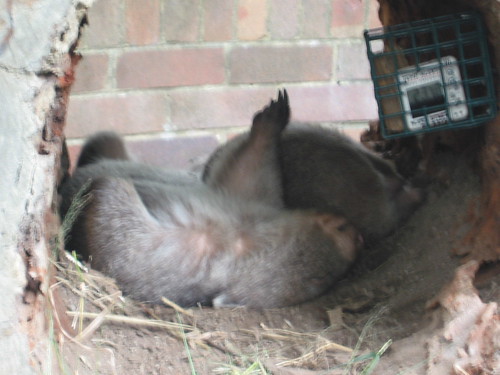Here are the points for Berlin:
1 point goes to Gendermenmarkt. Regarded as Berlin's most beautiful markt/square, the East Berlin Concert Hall sits in the middle of the square. This was guarded on both sides by 2 identical churches - one French and one German. Unfortunately I failed to see the greatness of this markt/square. I was even there at twilight.
2 points go to Hitler's bunker. It was only recently (late 80s or early 90s) confirmed as THE bunker that Hitler hid during his final weeks and ultimately committed suicide, it is now just an insignificant carpark. My guide told me that the concrete walls and ceilings of the bunker was so well-built that it could have survived a direct nuclear bomb hit. So needless to say both the Soviets and then the Germans failed to destroy and remove the bunker in order to reclaim the land. Former site of Himmler's bunker, however, is now part of the Memorial to the Murdered Jews of Europe (see points).
3 points go to Checkpoint Charlie. It is actually a recreation of what the Checkpoint used to look like at the very beginning of the East/West division. The photos of the American & Russian soldiers are even the real pictures that were featured. My guide told me that it was just some recent art project. Anywho, the museum nearby show the evolvement of the Checkpoint and the Berlin Wall. It is well worth a look.
4 points go to the Reichstag. Only reopened as the German Parliament House and open for public's visit in recent years, the newer glass dome actually fits the old building very well. The spiral inside the dome is a must visit attration for most tourists. Unfortunately it was closed for the whole of October for some refurbishment so I couldn't get in.
5 points go to the Humboldt University. Once a highly regarded university in the world, Albert Einstein taught here prior to WWII. It was also the first modern university in the world that introduced the "teaching as well as research" mode for academics. Thanks a lot!
6 points go to the New Synagogue. Not really new anymore and it doesn't actually work as a synagogue either, the New Syngogue however retains its golden exterior. This is a reflection of its former glory pre-WWII. Right now, its facade was restored post-reunification as a memorial to the Holocaust and Kristallnacht, the night when this beautiful former synagogue was burnt to the ground for the Jewish pogrom.
7 points go to the Berliner Dom (Berlin Cathedral) and the adjoining Lustgarten (Pleasure Garden). It is a beautiful looking Cathedral and garden. This Dom, however, is built on the site of a former church that stood on the same grounds until it was pulled down some decades ago. Remnants of this old church can be seen within the grounds of the Dom. It is also across the road form the former site of the Palast der Republik (Palace of the Republic), which served as the Parliament House during the times of East Germany.
8 points go to the Neue Wache (new guard house). It has gone through several re-dedications but it was never far from being a memorial to war. Since the reunification it is a meorial to the victims of war and tyranny. The hole above the statue exposes it to all natural elements.
9 points go to Alexanderplatz. It is filled with stalls selling würst and souvenirs. It is also surrounded with shopping centres and within walking distance to the Fernsehturm.
10 points go to the Memorial to the Murdered Jews of Europe. Often mistaken as a memorial to the Holocaust, it is actually just one of Berlin's several memorials to the Holocaust. The memorial to the homosexual victims, for example, is just across the the road, while the memorial to the gypsies are still to be completed. The Memorial to the Murdered Jews of Europe also has a museum below ground which you can look through the atrocities the Jewish people went through.
And finally,12 points go to the Ampelmann. During the times of East Germany, East Berlin had its own set of traffic lights. Since reunifications, the residents had fought ceaselessly to keep these little things. Right now, they are the symbol of Berlin.
That's all folks! Next I head back to the familiar cities of Oslo & HK so I probably won't blog again until I get home. Catch you later!
